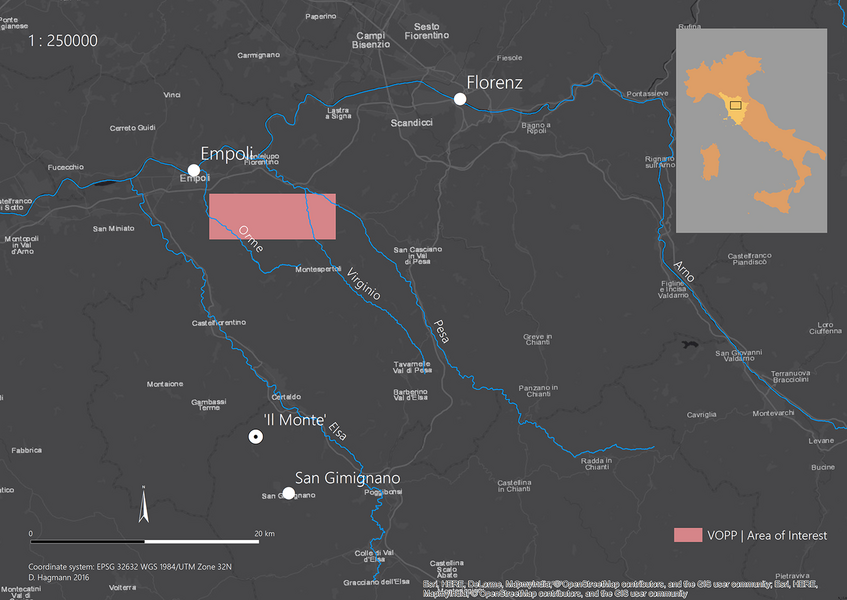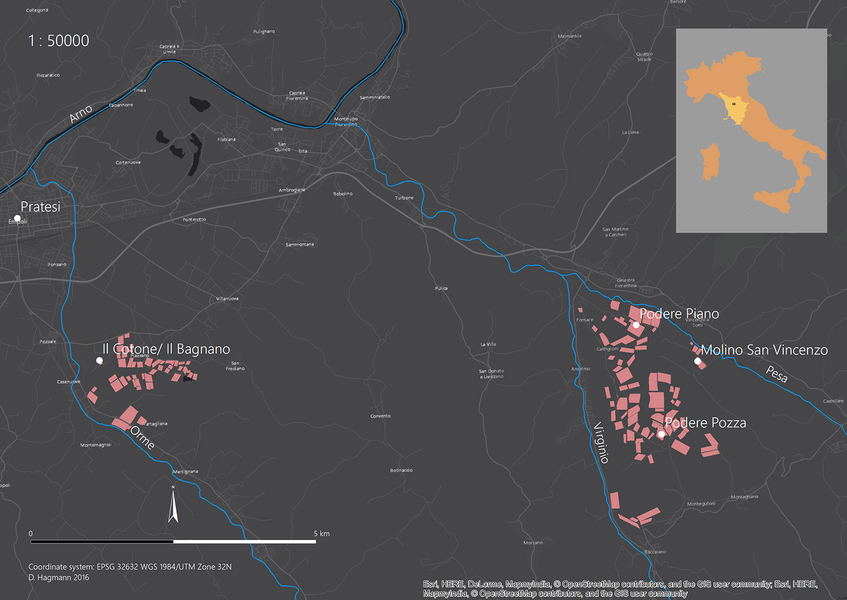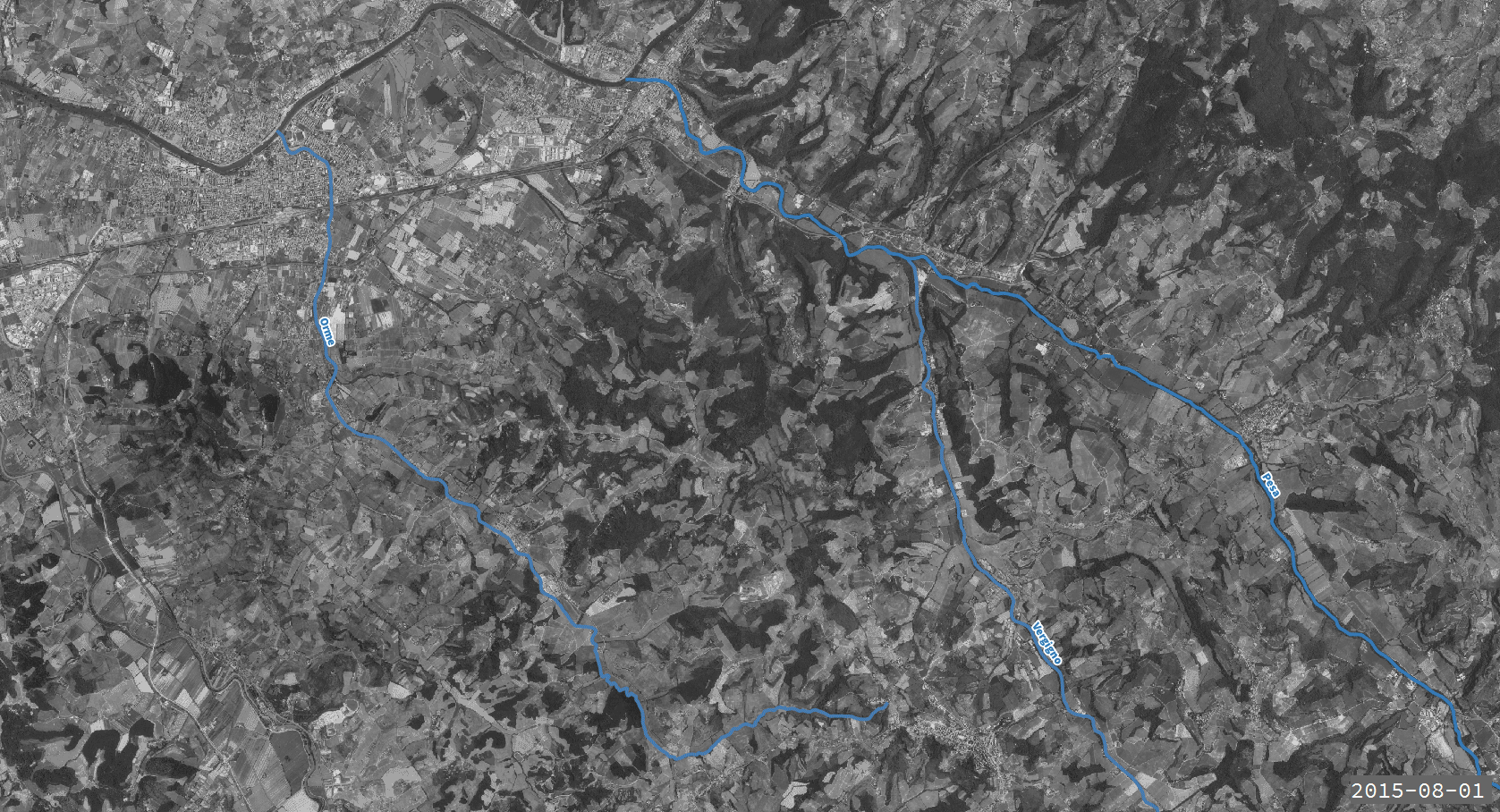Val di Pesa and Val Orme as a changing rural landscape
An integrated approach
FWF stand-alone project P 27476
FWF project
The project 'Val di Pesa and Val Orme as a changing rural landscape: an integrated approach', funded by the Austrian Science Fund FWF, tries to explore the dynamically changing archaeological landscape within an precisely defined study area in Tuscany/Italy.
Project lead: Univ.-Prof. Dr. Günther Schörner, M.A.
Lifetime: 2015/02/01–2018/10/31
in collaboration with
- Segretariato Regionale del Ministero dei Beni delle Attività Culturali e del Turismo per la Toscana (external link)
- Comune di Montespertoli (external link)
- Associazione Archeologica Volontariato Mediovaldarno (external link)
- Austrian Academy of Sciences/Austrian Archaeological Institute (external link)
Project description
Northern inland Etruria is one of the least studied areas in Italy, especially as far as the Roman period is concerned. The FWF funded Vienna Orme and Pesa Valley Project resp. Vienna Virginio Orme and Pesa Valley Project (VOPP) addresses this situation and covers a microregion defined by the river valleys of Orme, Virginio, and Pesa, between the surroundings of Empoli in the Arno plain and the more mountainous inland territory to the south. VOPP is designed as landscape archaeological project with a consistent methodological framework combined with modelling and clear-cut objectives as well as research questions.

VOPP: Archaeological project area at Tuscany (Dominik Hagmann, Esri, Natural Earth 2016 | CC BY 4.0)

VOPP: Archaeological survey areas 2015–2016 at Tuscany/Italy (Dominik Hagmann, Natural Earth, Esri 2016 | CC BY 4.0)
The general aim of the project is to investigate changes and continuities of land-use and human activities in the landscape as a dynamic space, which develops interactively with the people inhabiting it. Several objectives will be addressed:
- The changing (or unchanged) nature of rural land use and the processes behind these changes
- Issues of site definition and site classification, especially villas, and the constitution of villa landscapes
- The relationship between the Roman town of Empoli and the valleys of Pesa and Orme
- Differing patterns of use of material culture
The project is chronologically inclusive, examining sites ranging from the Etruscan period to the early Middle Ages, with special focus on late republican and early and late imperial times (150 BC – 400 AD). The project explores processes of transformation during periods of expansion, intensification, consolidation and eventual deconstruction of the Roman rural landscape. Key aims for discussing the character of the landscape are to identify the infiltration/withdrawal of a variety of habits into daily life and the change of patterns relating to the production, distribution and consumption of material culture.

GIF
VOPP: GIF animation of the screened survey fields at the Orme- and Pesa-valley between 2015 and 2016 (Dominik Hagmann, Regione Toscana 2018 | CC BY 4.0)
The approach is centred on interdisciplinarity. In order to study land-use and the landscape developments a multi-stage, multi-scalar fieldwork scheme (with built-in feedback loops) will be applied. VOPP will conduct systematic data collection from multiple sources. It bridges the gap between excavation, pottery assemblage analysis, geophysical prospection and systematic on-site surveys with its emphasis on single sites and intensive off-site surveys, extensive-mode survey reconnaissance of the region and geoarchaeological investigations with its much broader regional approach. Further pottery studies and geoarchaeological, archaeobotanical and zooarchaeological analyses will provide important insights into the human-landscape interactions and a reasonable and well founded idea of the demand and consumption at different sites, defining and being defined by their status and function in local networks.
The application of different models and the transparent discussion and presentation of the methods used in combination with a sophisticated dissemination strategy will make VOPP an important contribution to landscape archeology, survey methodology and analysis of the material culture for research in northern Etruria.
videography
In course of our efforts in visual metadata documentation (VMD) various research activities are recorded through video and distributed on different channels.
